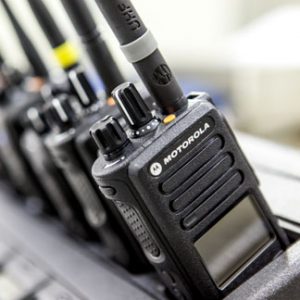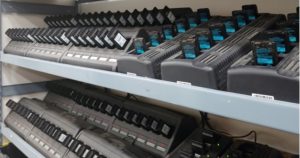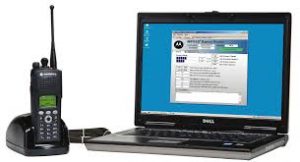Have questions about battery maintenance?
Contact Us. We’re here to help.
Modern batteries used in handheld (aka portable) radios are designed to, at the very least, get you through an eight-hour work shift with power to spare. On newer models, like the IMPRES batteries supporting Motorola’s XPR 7000e Series, a fully charged battery can last an entire day. That means fewer trips to the gang charger for a replacement.
As good as they are, though, radio batteries have a shelf life of about two to three years, and poor battery maintenance can shorten that lifespan. A shorter battery lifespan means you’ll have to buy replacements more often. But, by taking care of your batteries, you can make the most of your initial investment.
If you have any questions about maintaining batteries, you can Contact Us; our Account Managers and Service Technicians are here to help you out. Or, keep reading for ten maintenance tips that will help you get the most life out of your batteries.
 Avoid Unnecessary Power Drain
Avoid Unnecessary Power Drain
Taking the battery out of your portable radio when you’re not going to use it for a while – like at the end of a shift – is a great way to avoid unnecessary power use. Remember that, even if your radio is turned off, there are components that continue to draw a small amount of power. Removing the battery ensures that won’t happen.
Be Mindful of Where You Store Your Batteries
If projects in your industry are based on seasonal work (oil and gas, tree planting, etc.), then your radios probably spend an extended period in storage. That means your batteries do, as well.
Make sure they are both stored somewhere you can control the environmental conditions. Ideally, your radios and batteries should be stored at 20 to30 degrees Celsius, and humidity should be kept below 50%. That means your outdoor shed or portable, remote office may not be the best place for long-term storage. If you have an equipment storage room that meets these conditions, use that, instead.
The good news is that new batteries stored properly will perform optimally, even when stored for over eighteen months.
Don’t Store Your Radio Batteries Fully Charged (or Fully Drained)
In addition to storing your radio batteries in the right environment, be sure to store them at the right charge level. New batteries can be stored as you receive them, but if the battery has been used, it’s best to charge (or discharge) it to around 50%. Doing that helps to maintain a battery’s capacity and overall useful life.
Only Charge Batteries When You Have To
Recharging a battery while it still holds a usable amount of charge can reduce the maximum capacity of your battery over time. So, only recharge it when it is near 0%.
Many of our clients supply their team with spare batteries when they are on the job. That way, they don’t have to stop, mid-shift, to recharge a battery that is only partially depleted. This has proven to be more cost-effective for them as it leads to more complete use of their batteries and a more efficient workday.
Be Sure to Charge Batteries at Room Temperature
This may sound strange but remember: Many Albertans work in cold temperatures, and they take their handheld radios with them. Keeping radios under their jackets and next to their bodies keeps them warm, but those batteries are still below room temperature.
Recharging your radio batteries before they’re above 4 degrees Celsius or below 60 degrees can reduce their useful life.
Pay Attention to the Ratings
All electronics have an IP rating that tells you how waterproof and dustproof they are, and this includes batteries. Exposing batteries to conditions they aren’t rated for, like immersion in water, can do serious damage to them.
As a safety note, if you are using intrinsically safe radios, you must use intrinsically safe batteries, as well.
Don’t Leave Fully Charged Batteries In the Charger
Leaving a battery in the charger after it is fully charged can diminish its capacity if done repeatedly. Some chargers, like IMPRES chargers from Motorola Solutions, are capable of providing a ‘maintenance charge’ which gets around this problem. That said, it’s always best if you can remove a fully charged battery from the dock and store it properly.
This also means you can’t use the battery charger as a battery storage option, convenient as it may be.
Charge Brand New Batteries Overnight Before Using Them
Charing a brand-new Motorola IMPRES battery overnight is one of the easiest things you can do to make sure you get the most capacity out of it. This first charge drains the battery completely before recharging it to 100%. A battery can lose some charge if it sits unused, so this conditioning cycle ensures your radio’s battery is ready to go on day one.
Getting Started
Making your radio batteries last is one way you can make the most on your investment. While they will eventually have to be taken out of rotation, recycled, and replaced, proper use and maintenance will allow you to avoid paying that cost earlier than planned.
If you’d like more information on how to take care of your batteries, or if you’d like them serviced, Contact Us. Our Technicians and Account Managers are here to help.
Tridon is a full solution Telecom Systems Integrator with CSA certification and licensed by APEGA. Our Engineering, Service and Tower Divisions collaborate with customers to build engineered solutions including communications systems design, tower inspections, and co-location, wireless broadband, fiber optic cabling, site security, and two-way radio communication.







